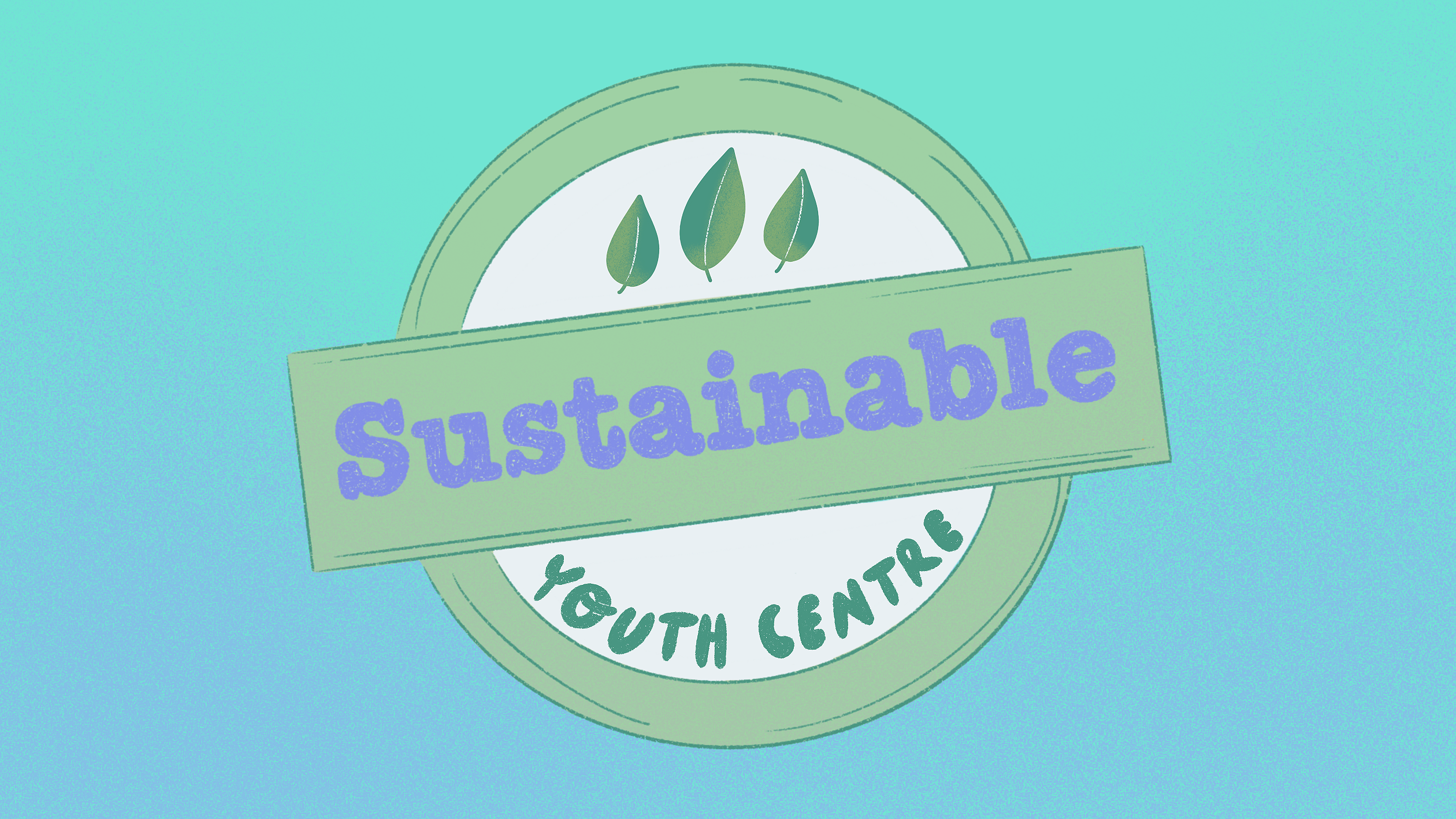
Illustration by Daniela Nunes
The quest for sustainability in youth activities
The case of the Quality Label Youth Centres
by Mary Drosopulos
 Sustainability in youth centres: why is it important?
Sustainability in youth centres: why is it important?
Seeing youth centres as dynamic spaces where young people develop skills and values for life, it is easy to grasp the added value of a youth centre having a sustainable mindset and approach, clearly manifested in its philosophy and daily practices. In this context, sustainability does not refer solely to nature education or running activities in eco-friendly ways, but also on how a youth centre is being managed, starting with how it deals with human resources and extending to including the local community in cultivating a sustainability-oriented culture.
Throughout the last years, partly due to youth-led activist movements responding to climate change effects, and partly due to raising global awareness over the connection between sustainability, well-being and quality of life, important steps have been made in the realm of youth work, youth policy and non-formal education towards the creation of a framework that enables participants in youth projects to make environmentally conscious choices.
The Council of Europe has had an essential role in supporting youth-led initiatives promoting sustainability. For instance, the Joint Council on Youth (CMJ) has taken several important steps to make the youth sector greener and more sustainable; ideas and recommendations coming from the CMJ have even been implemented in the two European Youth Centres in Strasbourg and Budapest. The CMJ has a special task force working on greening the youth sector, which in the last years has been working closely with youth researchers, youth workers, activists and other practitioners active in the wider field of youth.
Moreover, for over a decade now, the European Youth Foundation (EYF) has been encouraging youth organisations running EYF-funded projects to employ green practices and reduce the environmental impact of their activities.
Sustainability is also an essential factor in other programmes of the European youth sector, such as the Erasmus+ programme. In the last years, sustainability has gained importance both with regards to the activity content and practices that organisations are encouraged to develop, but also to the provision of incentives for participants to travel using eco-friendly means of transport.
In this context, it is extremely important that Quality Label Youth Centres not only participate in this global discussion, but also become front-runners in the field; let us not forget that being part of the Quality Label Network foresees playing a major role in the shaping of policies, at a local, national and regional level. As we will discuss further on, Quality Label Youth Centres can benefit greatly from information and practice sharing among the network and from investing on capacity building and the cultivation of an organisational culture that is open to positive change.
 On the Quality Label for Youth Centres
On the Quality Label for Youth Centres
The European Steering Committee for Youth (CDEJ) agreed in 2008 on launching a project aimed at promoting the European Youth Centres of the Council of Europe in Budapest and Strasbourg, as standard-setting instruments and examples of good practice for youth policy. The idea was to inspire, but also guide youth centres around Europe to become pioneers and frontrunners in the promotion of youth work and youth policy in their region, by encouraging them to
- join a pan-European network, designed to facilitate knowledge sharing and support regarding youth work and youth-policy oriented practices;
- undertake necessary actions to meet a certain number of quality criteria that would enable them to enhance their role as providers of youth work and strengthen their capacity to serve young people and the youth sector, overall.
In a nutshell, this is what the Council of Europe Quality Label for Youth Centres (from now on, the Label) is all about. It is a dynamic and constantly growing project, which, according to the programme’s web page, consists of three main elements:
- a set of quality criteria that youth centres need to meet to be awarded the Label;
- an annual meeting of the European Platform of Youth Centres to ensure networking among centres recognised with the Label and those aspiring to its acquisition;
- an annual training course for the educational staff of the youth centres.
 Sustainability in Quality Label Youth Centres: food for thought
Sustainability in Quality Label Youth Centres: food for thought
The aim of this article is to visit the notion of sustainability as perceived and practised by the youth centres holding the Quality Label. Sharing some insights, perspectives and practices, the article aspires to contribute to the wider conversation of how youth centres can become more sustainable and eco-friendlier, based on the peculiarities, climate and morphology of each location, and how obtaining the Label can support and accelerate this process. It should be emphasised that the article can only give a small taste of the youth centres’ reality; sustainability is a fascinating and constantly evolving topic, which will hopefully take more space in youth policy and youth research in the years to come.
My personal interest in the Quality Label Programme started back in 2012, when I spent a year as a volunteer at the EuroMed Youth Centre in Türkiye (Adrasan), one of the first centres to be awarded the Label. In the last two years, I have had the opportunity to visit the Quality Label centres in Bulgaria, Finland, Portugal and Spain either as part of a team of assessment experts or as a rapporteur in activities taking place at the centres.
Moreover, interesting insights have been shared during the 7th Training Course for Youth Centres in the Council of Europe Quality Label Network, which took place from 2-6 October 2023 at the European Youth Centre in Budapest, where I was one of the trainers. Finally, findings were collected both online and offline, using a variety of methods, including interviews.
 So, how sustainable are you?
So, how sustainable are you?
As per the quality criteria, sustainability is an important parameter that needs to be met; at the same time, however, it seems to be one of the most challenging prerequisites, due to various factors, such as lack of pre-existing know-how or sustainable living-oriented culture, different understandings and priorities, limited infrastructure, bureaucracy or financial reasons.
Many interviewees’ initial reaction would be to associate sustainability with work results and multiplier effect. This made me think in terms of semantics and applicability of this buzzword. The American social philosopher Thomas Sowell said that “if a word means everything, then it means nothing”.
Let us look at the word “sustainability”: in most languages and cultures, it is quite an elusive term that can have different meanings and interpretations. Becoming sustainable is often seen as a “sign of our times” or a trend, yet, the most popular definition that we refer to goes back, in fact, to the 1980s. It was the United Nations Brundtland Commission that in its report, Our Common Future, defined sustainability as “meeting the needs of the present without compromising the ability of future generations to meet their own needs” (1987: 43). Albeit vague, this definition continues being a commonly accepted and well-established one.
In this context, how can we measure and assess sustainability, both in terms of focus and numbers?
In her 2022 TED talk Defining Sustainability: Absolutely, environmental engineer and anthropologist Anjila Hjalsted claims that “in order to achieve sustainability, we need to know “what it looks like”' and then, “assess it in terms of numbers”. It is important to:
- measure how much a stakeholder (be it a country, a region, or a youth centre, as in in our case) can afford to impact the environment;
- assess where they actually are in terms of figures (using indicators such as carbon footprint, respect to biodiversity, waste production, etc.); and
- develop an action plan to improve this performance.
The Youth Partnership has developed a Sustainability checklist designed specifically for the youth sector: this checklist perceives sustainability as “a continuous process, requiring creativity and adaptability while making the best choices for the future of humanity and our planet”(2021: 16) and identifies strategies and practices (formalised or not) adopted by different youth organisations.
 A “green” culture
A “green” culture
More or less, all the youth centres that have been granted the Label have a sustainability agenda in place: some might be exhibiting greater progress and sophistication in their approaches, while others might be following more basic practices; some might be driven by a well-cultivated philosophy and deeper know-how towards sustainable living and doing, while others might be aiming primarily at energy saving and resource economy. There are centres which had had a sustainability-oriented culture even before joining the programme and others that adjusted and started thinking about becoming green following the recommendations of experts’ visits. In all cases, despite the level of expertise and inner motivation, sustainability is something which is relevant to the work of all Quality Label Youth Centres.
When it comes to the basics in sustainability, all labelled centres meet the minimum criteria: they have consciously reduced the use of paper and printouts; they use recyclable paper and materials and have different bins to classify waste or they encourage their visitors/residents to protect the environment by not asking for towels to be changed every day or by doing small actions such as turning off the air conditioning, the lights or other devices when exiting the room and generally, taking smart and responsible decisions. Moreover, they opt for local, organic food and try to make good use of natural light and alternative heating solutions. However, there are great divergences among the centres when it comes to the extent to which they involve young people in sustainability-related initiatives and decision-making processes and to how explicit and well-illustrated the sustainability component is in their activities with young people.
Another interesting factor differentiating centres is their educational approach regarding the environment.
First of all, for those that are located in urban zones, the extent to which the centres will make use of the surrounding nature (be it a park or a garden, for instance) is much connected with the dominant local or national culture. For instance, in the Nordic countries, making the best use possible of surrounding nature – even in winter – is a widespread and commonly accepted tradition. This, however, might not be such a common practice in some South-East European countries, especially during certain months of the year.
Secondly, some centres might use the environment as a means, but not necessarily as the focus of their activity. In other words, centres might organise a variety of activities in a natural setting (a lake, a forest, a beach), but without triggering a more critical contemplation of nature and what individuals need to do to preserve and protect it. In such cases, participants might enjoy the activity for the fun part of it (going on a short trip, doing something together, etc.) or for offering them a new skill (such as fishing, hiking, camping in the woods, collecting herbs, etc.), but might fail to see the human rights component of it and how the skills they have acquired can be applied in society as useful, long-lasting and replicable competences.
In this framework, it is important that youth centres take the extra mile to connect their environmental and/or nature activities to a wider human and social rights framework and make young people aware of this; it is equally essential to involve youth meaningfully in the design, implementation and evaluation of such activities. This will allow young participants to see beyond the “fun” part of any environmental activity, instilling in them a sense of ownership, which can help youth centres have a viable and multiplier effect.
Let us see some inspiring practices:
The Eco Center Radulovački, as implied by its name, is a labelled centre where sustainability is the main priority. This makes the centre quite unique in the sense that it has developed more sophisticated strategies on promoting eco-friendliness, by placing this element at the heart of its activities with young people. It might be worth saying that the centre sprang from an environmental movement which started from environmental NGOs and citizens’ associations mobilising themselves against pollution and practices that destroy nature and developed into what is known today in the region as the Vojvodina Environmental Movement. Preserving this legacy continues being at the core of the centre’s activity.
Currently, a new wing is being added to the main building; the plan is to make it energy efficient using renewable energy resources. What is particularly interesting, however, is that the building process will be open to different target groups who may be interested in learning more about the systems and technological tools involved in contemporary “green” architecture.
The Euro-Latin American Youth Centre (known by its acronym CEULAJ), is located in the small town of Mollina, Spain. It is part of the Youth Institute (INJUVE), a government organisation attached to the Ministry of Health, Social Policy and Equality of the Spanish Government. The centre is the outcome of a transformation – it is situated in a space that once used to serve as a juvenile prison. In this context, it has a high symbolism with regards to youth participation, active citizenship and human rights. The centre is built in a way that allows residents to be close to nature and minimise energy consumption, while it also has a number of sustainable practices in place. What is noteworthy is the fact that the centre’s restaurant counts almost exclusively on the use of local products, which are promoted to guests, especially those from different regions or countries, as an integral part of the local gastronomy and culture. The town of Mollina is famous for its olive oil production; at every meal, guests are firstly offered bread with olive oil and traditional tomato spread, and then can also opt for more “international” choices.
Bulgaria and Finland are quite far from each other, both in terms of distance and climate. Each of these countries, however, has two youth centres in their territory holding a recently renewed Quality Label. Sustainability has become a priority for them over the last years. Let us see why.
The Plovdiv youth centre produces its own energy using solar panels. This means that it generates hot water and heating for its rooms and working spaces. Due to the limitations of the original construction of the building, the centre still counts on partial use of air conditioning, yet it aspires to reduce this and keep it only as complementary under extreme weather phenomena. The team’s immediate plan is to further enhance this system by having photovoltaic panels installed on the roof. Moreover, responding to recommendations, the local team had some of the working rooms renovated in a way that would make optimal use of natural daylight and this has ensured that all newly created working rooms meet sustainability-related criteria.
The biggest achievement, however, has not been in terms of construction, but rather in culture. The centre’s educational advisor, Mariya Angelova, explains how obtaining the Quality Label has promoted a shift in mindset when it comes to the environment:
“There was no such culture before. We relied on Label experts to provide all the necessary know-how and guidance, to help us manage the delivery of products, but also create an adequate educational environment. Getting the Label was a turning point for us and we can clearly see the benefits.”
Winters can get quite cold in the picturesque part of Finland where Villa Elba is located. Energy efficiency has traditionally been a priority for this youth centre, but even more so in the aftermath of the energy crisis that followed the outbreak of conflict in Ukraine. Villa Elba has established a smart system to reduce energy use, while it has also adjusted its taps in all bathrooms and the kitchen to limit unnecessary water consumption.
Finnish youth centres have traditionally had a mindset for sustainability, which is also very much connected with Nordic culture. However, recent studies (Burenby et al. 2021; Hickman et al. 2021; Sangervo et al. 2022) show that in the last years, the need to become greener has become a hot topic in the national agenda of Finland due to the reported rise of eco-anxiety among young people. Findings indicate that this phenomenon is much connected with young people’s concerns over the global effect of climate change and the prevention of humanitarian crises such as the one experienced after the outbreak of the Covid-19 pandemic.
Heli Lehto is Villa Elba’s development manager and team leader for the pedagogical team. She shares some of the initiatives that the youth centre has been taking to equip youth workers with the skills that will enable them to understand this social phenomenon affecting youth, and design their activities accordingly:
“Although there has always been an ecology and sustainability-related component in our nature activities, we are trying to do more. For instance, we recently held a climate change-themed camp for educators/youth workers in Villa Elba. The aim was to raise common hope and will power, and give educators tools to deal with climate change given that people´s knowledge and skills are very diverse on this matter. The target groups were educators and teachers from different parts of Finland, but also from the network of climate and sustainability education projects funded by the Board of Education.”
Heli Lehto emphasises the fact that Villa Elba is addressing the topic “directly with young people in an open and honest manner” and she concludes that it is the centre’s mission “to provide young people a safe space where they can find solutions for their own future”.
It is interesting how eco-anxiety is an alarming social phenomenon among young people in Nordic countries, but not to the same extent as in South-East Europe. As Mariya Angelova shares, “young people in our region are indeed concerned about the climate, but it is mainly civically engaged youth who are more vocal about this issue, mainly because they become more aware of the connection between climate and human rights”.
 Conclusions
Conclusions
Becoming environmentally sustainable is not as vague and complicated as the word itself implies. It can simply start with youth centres engaging in small and easily implementable ideas and then moving to larger investments. It is particularly important that local young people are involved in these processes, as this will instil in them a sense of ownership and commitment. It is also crucial that sustainability becomes not just a means but, also, the principal focus of some activities, so that young people can become more aware of how they can impact the environment with their actions.
Receiving and maintaining the Quality Label has meant that youth centres all around Europe have been given the opportunity to experiment with new ways to become smarter and more sustainable. Apart from the guidance provided, joining a wider network of centres means receiving support by sharing experience and know-how. Quality Label Youth centres have learned much by visiting each other’s setting and working together; it can be confidently said that networking and peer learning is an added value of being part of a community of youth centres striving for excellence in line with the Quality Label programme standards.
Get the Quality Label and be sustainable!
 References
References
Burenby L. et al. (2021), “Climate change and mental health”, Discussion paper 32/2021, Finnish Institute for Health and Welfare, Helsinki.
Hickman C. et al. (2021), “Climate anxiety in children and young people and their beliefs about government responses to climate change: a global survey”, The Lancet Planetary Health Vol. 5, No. 12, E863-E873: https://doi.org/10.1016/S2542-5196(21)00278-3.
Sangervo J., Jylhä K. and Pihkala P. (2022), “Climate anxiety: conceptual considerations, and connections with climate hope and action”, Global Environmental Change Vol. 76: https://doi.org/10.1016/j.gloenvcha.2022.102569.
 Useful tools and resources
Useful tools and resources
High-level Conference – Environmental Protection and Human Rights
Manual on human rights and the environment

Mary is an intercultural trainer and researcher.


